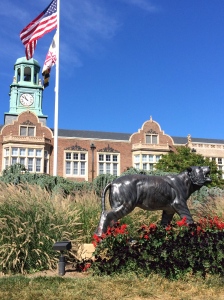- By Jill Martin, CNN:
“A new video has surfaced showing Baltimore Ravens running back Ray Rice punching his then-fiancee inside an elevator at a hotel in Atlantic City, New Jersey, in February.”
This lead got straight to the point and tells you exactly where the event took place. It also catches your attention indicating that there is a new video to watch regarding this incident. The story holds proximity because it involves a player on our home team in Baltimore.
- By Alison Knezevich, The Baltimore Sun:
“Baltimore County authorities have identified the Towson University student who died at an off-campus apartment this weekend.”
The lead starts off with “Baltimore County authorities”, which instantly catches your attention because of proximity. Also identifying in the lead that a Towson student died brings some impact to the story.
- By Eric Schmitt, Michael R. Gordon and Helene Cooper, The New York Times:
“The Obama administration is preparing to carry out a campaign against the Islamic State in Iraq and Syria that may take three years to complete, requiring a sustained effort that could last until after President Obama has left office, according to senior administration officials.”
This particular lead in the New York Times caught my attention because of its length. The journalists packed this lead with as much information as they could, even though 30 words is typical.
- By Petula Dvorak, The New York Times:
“Avery Gagliano is a commanding young pianist who attacks Chopin with the focused diligence of a master craftsman and the grace of a ballet dancer.”
I chose this lead because of the lack of interest it held for me. In class we learned that you should never start your lead with the name of an unknown person.
- By Ben Popken, NBC News:
“Another royal bundle of joy is expected to be a bonanza for the British economy, tempered only by the “baby fatigue” that often sets in with second children (sorry, Harry!)”
I was attracted to this lead because the subject matter was the royal family. However, I found this lead to be weak. It did not ask many of the major W’s.
 Portrait Shot:
Portrait Shot:

